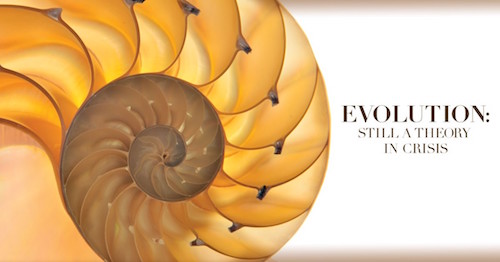 Evolution
Evolution
 Intelligent Design
Intelligent Design
Natural Life: Cosmological Fine-Tuning as an Argument for Structuralism
Editor’s note: In his new book Evolution: Still a Theory in Crisis, Michael Denton not only updates the argument from his groundbreaking Evolution: A Theory in Crisis (1985) but also presents a powerful new critique of Darwinian evolution. This article is one in a series in which Dr. Denton summarizes some of the most important points of the new book. For the full story,get your copy of Evolution: Still a Theory in Crisis. For a limited time, you’ll enjoy a 30 percent discount at CreateSpace by using the discount code QBDHMYJH.
Cosmological fine-tuning has long been a staple of the argument for intelligent design. It is, perhaps, not a mere coincidence that the laws of physics must be exactly as they are for life to exist in the cosmos and that, if they were different, life would be impossible. But there is another application of this argument that strongly supports the structuralist understanding of biology that says life is a natural part of the world order.
In the Darwinian view, life is an artifactual thing, something apart from nature, its constituent bio-forms mere “contingent assemblages,” artifacts of deep time and chance. This view is surely one of the strangest inferences in the history of human thought, and an inference for which there never was the slightest rational justification

After being in the cold for most of the past 150 years, overshadowed by the “cult of the artifact,” the traditional notion that life is an integral part of the natural order has found renewed support in the revelation of 20th-century physics and cosmology that the laws of nature are uniquely fine-tuned to a remarkable degree to generate environmental conditions ideal for life as it exists on earth.
The 20th-century cosmological evidence that the universe is fine-tuned for life is based on the observation that if the various fundamental forces and constants which determine the structure of the cosmos and the properties of its constituents did not have precisely the values they do, there would be no stars, no supernovae, no planets, no atoms, and certainly no life.
If the laws of nature are, for whatever reason, fine-tuned to generate environmental conditions ideally suited to the forms of life that exist on earth, so fine-tuned that, as Davies confesses, “the impression of design is over-whelming,”1 it certainly is not so outrageous to envisage that they might be also biologically fine-tuned to generate the grand hierarchy of forms themselves.
Lawrence Henderson implies in his 1913 classic The Fitness of the Environment that at least the basic biochemical design of life is immanent in the properties of matter and not an artifact of time and chance as Darwinism implies. Further confirmation of the unique chemical fitness of the cosmos for carbon-based life has come from the recent discovery of a vast and growing inventory of organic compounds in space, including some of the key monomers used in the building of the proteins and nucleic acid polymers in extant life on earth. The evidence that the cosmos is uniquely fit for carbon-based life as it exists on earth (including advanced forms utilizing oxidation as an energy source) is now so compelling that in searching for extraterrestrial life, scientists at NASA “follow the water”2 and look for oxygen in the atmospheres of extrasolar planets as a signature of life.3
The discovery that the cosmos is fine-tuned in this way provides powerful circumstantial support for the “laws of form” biology and the notion that life’s basic designs — the taxa-defining novelties, Bauplans, etc. — are immanent in the world-order. If nature is so fine-tuned for life’s environment, might the fine-tuning not also extend to the generative arena and include a set of laws of form, geared to actualize the forms of life on earth? The extrapolation is intriguing and very hard to resist. It is particularly hard to resist considering that the fitness of the cosmic, chemical, and physiological environment for life as it exists on earth does not stop with simple microbial life. It extends even to higher organisms like ourselves.
There is no doubt this cosmological fine-tuning provides a very powerful line of circumstantial evidence, drawn ironically from outside the biological sciences, for a return to a structuralist biology and the notion that life’s origin and evolution were built into the order of nature from the moment of the Big Bang.
References:
(1) Davies, The Cosmic Blueprint, 201.
(2) Baross, Benner, et al., The Limits of Organic Life in Planetary Systems, 5.
(3) Shawn D. Domagal-Goldman, Antígona Segura, Mark W. Claire, Tyler D. Robinson, and Victoria S. Meadows, “Abiotic Ozone And Oxygen in Atmospheres Similar to Prebiotic Earth,” The Astrophysical Journal 792, no. 2 (August 20, 2014): 90, doi:10.1088/0004-637X/792/2/90; The existence of oxygen is also considered a necessity for complex life. See David C. Catling, Christopher R. Glein, Kevin J. Zahnle, and Christopher P. McKay, “Why O2 Is Required by Complex Life on Habitable Planets and the Concept of Planetary ‘Oxygenation Time,'” Astrobiology 5, no. 3 (June 2005): 415-438, doi:10.1089/ast.2005.5.415.
Image credit: © janez volmajer / Dollar Photo Club.

